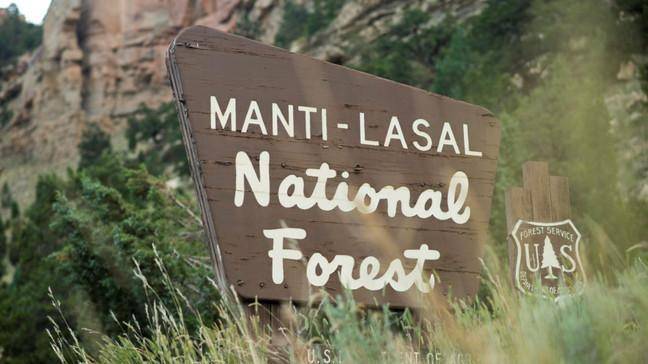Forest Service to release summary of results
Press Release
To inform and support management of the La Sal Mountain alpine ecosystems and in response to requests for information from the public, the Manti-La Sal National Forest has prepared a summary report containing alpine data analysis from the last five years.
“We are concerned about the potential impacts associated with recreation use, mountain goat herbivory and a changing climate on the alpine ecosystems of the La Sals,” said Ryan Nehl, Manti-La Sal Forest Supervisor. “The Manti-La Sal values the Mt. Peale Research Natural Area and is committed to its proper management.”
The summary report includes a manuscript based on the alpine monitoring data, which has been submitted for journal publication by Jeanne Chambers of the Rocky Mountain Research Station. Conclusions from the summary and statistical analysis of five years of data include:
- La Sal daisy showed a negative relationship between recreational and ungulate use and its probability of occurrence over time. (Although proportional frequency of La Sal daisy was negatively related to goat use in 2018, 2019 and 2020, the model estimates were not significant.)
- La Sal Mountains’ groundsel frequency of occurrence was negatively related to goat use in low recreational use areas, which is primarily where it occurred.
- The cover of forbs, which were the dominant life form, showed an almost continuous decrease over the five-year monitoring period. Goat use had a negative effect on forb cover in high recreational use areas. Low precipitation in several of the study years, especially during the growing season, likely influenced the results.
- Bare soil and erosion pavement increased over time. There were positive relationships between this ineffective ground cover and recreational use at the end of the monitoring period, and ineffective ground cover increased with increases in goat use.
Other information included in the summary report is trail camera data, repeat photography, DWR’s mountain goat management plan and a report submitted to the Manti-La Sal National Forest from Grand Canyon Trust.
Utah Division of Wildlife Resources (DWR) introduced mountain goats to the La Sal Mountains in 2013-14. In conjunction with DWR, the forest developed an alpine vegetation monitoring protocol and began vegetation monitoring in 2015. A joint monitoring plan was signed in 2017.
The Forest Service is continuing to monitor the La Sal Mountain alpine habitat and work closely with agency partners, including DWR, to create an appropriate management plan that addresses the trends in alpine resources on the forest.
“We appreciate the relationships that we have established with the state of Utah, the research station, and our local communities and nongovernmental organizations,” said Nehl. “We look forward to further cooperative efforts to sustainably manage these important resources.”
The mountain goat population has increased since the introduction of a total of 35 animals in 2013 and 2014. Current population estimates range from 85-125 animals. The DWR offered seven tags for hunting opportunity in the 2020 season and nine in 2021. In the fall of 2020, 18 goats were captured and collared by the DWR for monitoring purposes.

